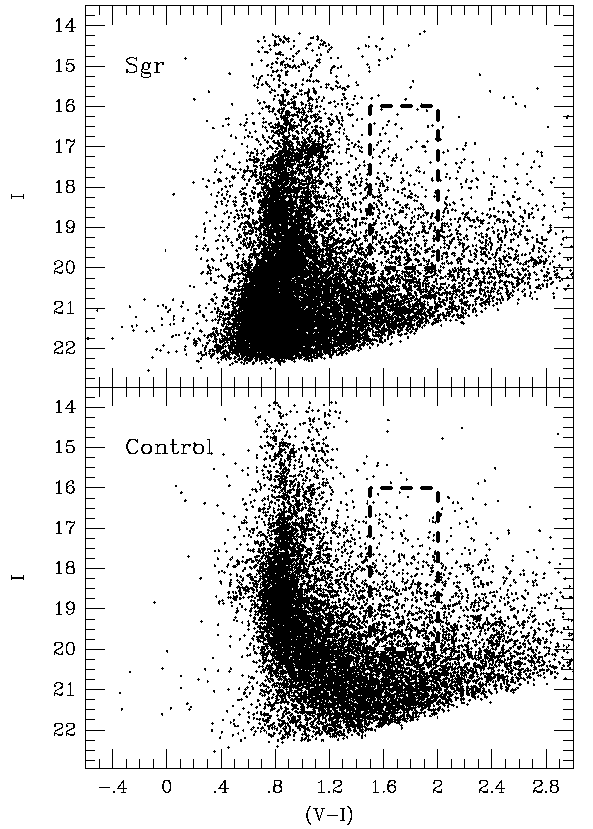Deep Photometry of the Sagittarius Dwarf Spheroidal Galaxy
We present deep CCD photometry of a field in the newly discovered dwarf spheroidal galaxy in Sagittarius (hereafter Sgr), and of a nearby control field. These data (totaling ≈3.5 hrs exposure time in V and I) were used to produce color-magnitude (CM) diagrams reaching I ≈22.3 in both fields. After statistically removing the field-stars from the CM diagram we find that Sgr is dominated by a moderately old (age ≈10 Gyr) population, significantly younger than a typical globular-cluster population. There is some evidence for a weak intermediate-age component or alternatively a population of blue stragglers. These results confirm that Sgr is a bona fide dwarf spheroidal (dSph) galaxy, the ninth found orbiting the Milky Way. We have discovered nine short-period variables in the Sgr field, well in excess of the number found in the control field. Seven of these stars have similar apparent magnitudes and are almost certainly RR Lyr stars in Sgr. We have used the minimum-light colors of the RRab variables to determine the reddening of the Sgr field to be E(V-I)=0.22. For an assumed RR Lyr luminosity of MV=+0.6 we conclude that the distance of Sgr is 25.2±2.8 kpc. The properties of the Sgr giant branch and upper main sequence are consistent with a mean metallicity of [Fe/H]≈-1.2±0.2.

Deep color-magnitude diagram of the Sgr dwarf galaxy and the control field
Numerical data for both CMDs can be retrieved from here
 back
back